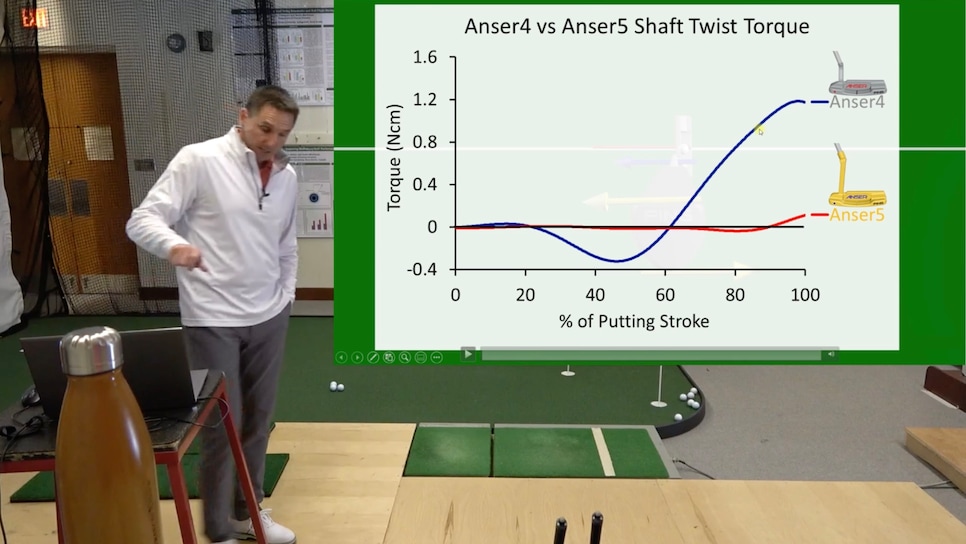All golfers have a relationship with the putters in their bag. Hopefully it’s a good one; a strong, emotional bond built on made putts and good times.
But put emotion aside for a moment, and there’s a different kind of relationship between golfer and putter. One based on physics. That was the one Dr Sasho Mackenzie recently took a close look at, with some rather interesting results.
For some context, Mackenzie is one of the brightest minds in golf today: a biomechanics professor at Canada’s St Francis Xavier University, he consults teachers and pros, and is the co-inventor of The Stack System training aid, which Matt Fitzpatrick credited with helping him gain almost 20 metres of distance en route to his victory at last year’s US Open.
But recently, Mackenzie’s been turning his attention to the flatstick. In a fascinating two-part video series (which you can watch here, the proceeds of which go towards Golf Science), Mackenzie uses advanced 3D modelling to explain the effects two different putter styles had on a group of golfers.
Here’s what he wants you to know about it.
The experiment
In his experiment, Mackenzie took 33 right-handed golfers with an average handicap of 10.3. He then had them hit 12-foot putts with two different putters: a Ping Anser 4, which features a slant neck for more toe-hang, and a more face-balanced long-neck Ping Anser 5.
When he analysed how the putter was moving, Mackenzie saw something most golfers are aware of by now: that both putters move on a slight arc during the stroke. From in, to square, then back to in on the follow through. The Anser with more toe hang moves on a slightly more severe arc, the Anser 5 on a shallower arc.

But when Mackenzie analysed what the golfer was doing, he found something rather different.
With the comparatively more face-balanced Anser 5, represented with the red line in the graph below, Mackenzie found that golfers were applying less “torque” force to the putter. In laymen’s terms, their hands were staying more quiet during the stroke and twisting the putter less.
By contrast, using the Anser 4 with more toe-hang, the putter that naturally moves more on an arc, golfers responded by forcibly twisting the club more during their strokes. Their hands are more active as they’re working hard responding to the putter’s different balance to square the face.

To use a non-golf analogy for a moment, think about someone test-driving two different kinds of cars: a hefty ute and a zippy sports car. Obviously we know the cars themselves are different, but put the same person in both cars, and they turn into a different kind of driver depending on what car they’re behind the wheel of.
“I find this very interesting,” Mackenzie says. “I probably feel like I’m trying to make the same stroke… but it seems that the act of using a different putter evokes a different types of forces from the golfer.”
Why you should care
Anyway, if I haven’t lost you yet, or you just skipped over the nerdy stuff, here’s a few reasons why you should care:
1. It underlines the important point that the relationship with your putter works both ways. You respond, and change, your actions based on how the putter you’re using is designed, whether you realise it or not.
2. If you want a stroke with less arc and wrist action, it may be that a face-balanced putter is good for you. On the flip side, if you feel comfortable using more hands and wrists in your stroke, you may be better off using a putter with more toe-hang.
3. If you tend to pull putts and miss them to the left, a putter with more toe-hang may be best for you, because your hands are going to need to work harder in order to close the putterface. Conversely, if you miss putts to the right by pushing them, a model that’s more face-balanced may help you square the face.
4. Remember that these are all general rules. Ultimately, different putter designs are good for different golfers, depending on what you’re going for. This is true for amateurs and pros alike. It’s why you should probably talk to your coach, or better yet go for a putter fitting, to see what best suits you.



